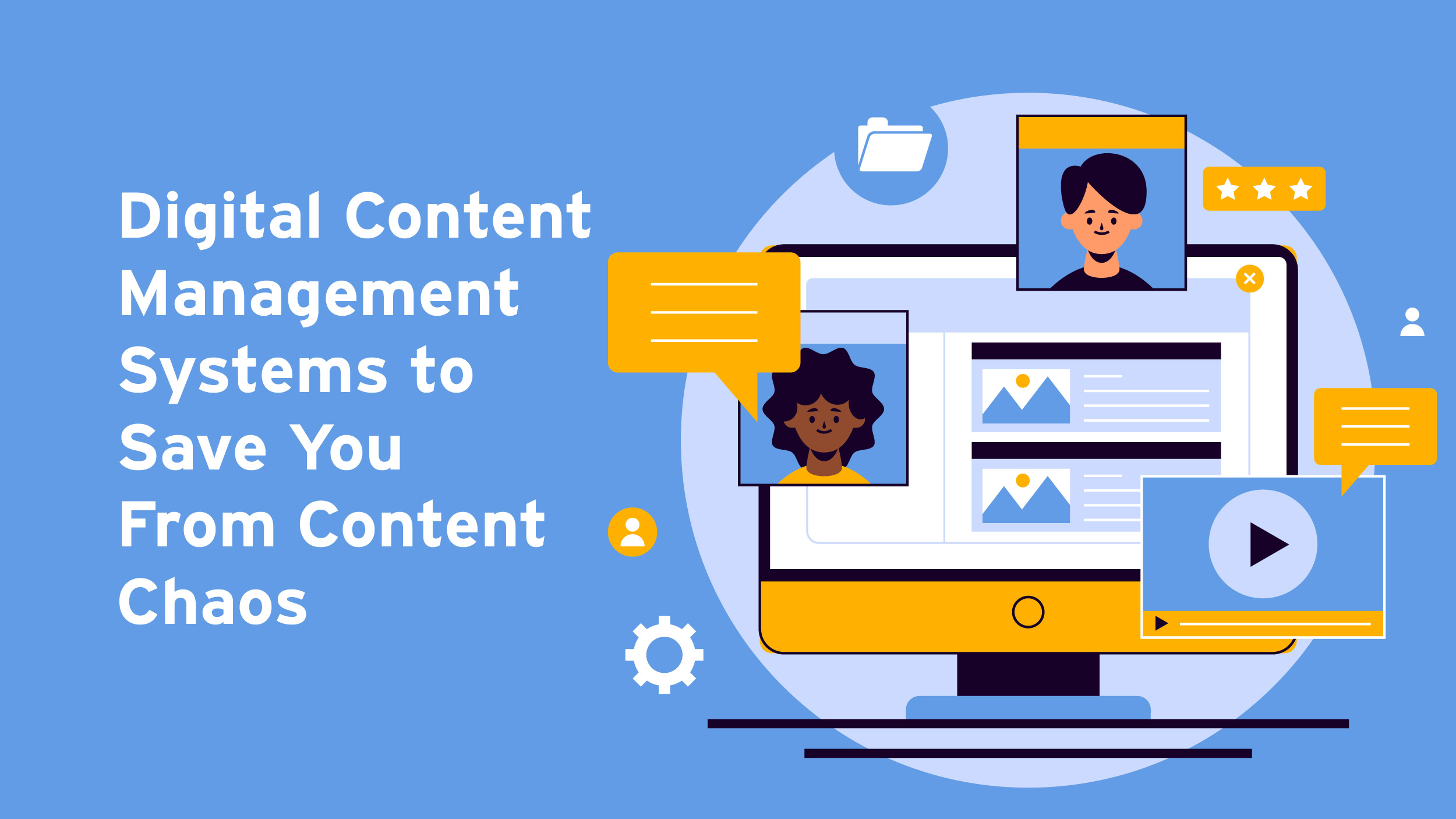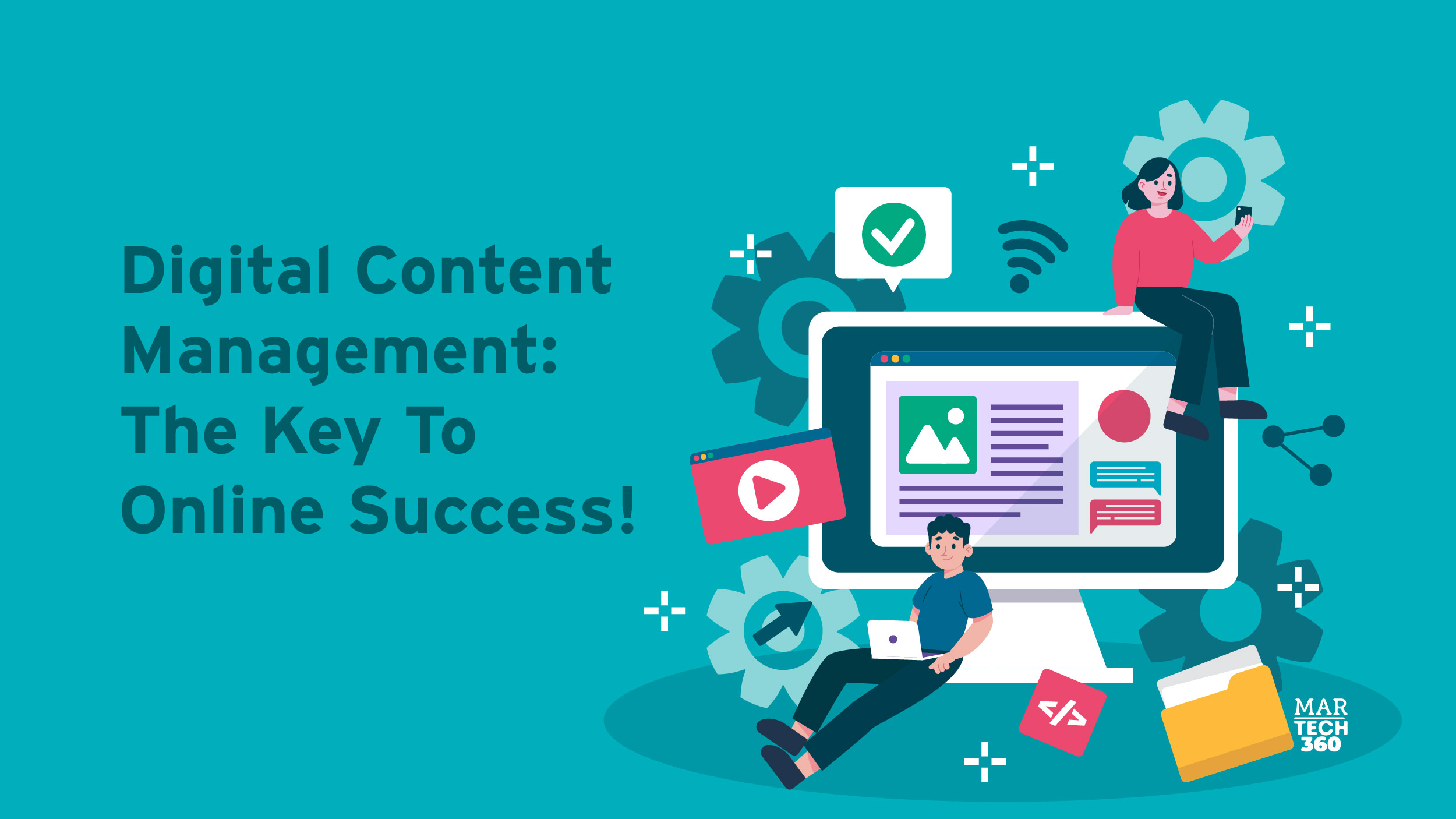Ever found yourself drowning in a sea of digital files, struggling to locate that one crucial document? Or perhaps you’ve wondered if there’s a more efficient way to organize your online content. Here is where digital content management (DCM) steps into the spotlight!
Let’s take a closer look at the ins and outs of managing your digital assets, uncovering several aspects of DCM to streamline your virtual workspace.
What is Digital Content Management (DCM)?
To maintain pace with the expansion of a brand, it becomes imperative to have a well-constructed strategy in place for managing the increasing volume of digital content that is either generated or acquired.
Digital content management (DCM) encompasses the entire lifespan of content and the procedures and tools employed by individuals or organizations for its administration. Although DCM primarily relates to online content, such as that found on websites, it also includes the various digital marketing channels used by brands. One key area within this realm is digital signage content management.
Digital signage content management focuses specifically on curating content for digital displays, ensuring that the right message reaches the right audience at the right time. This involves not only designing visually appealing content but also scheduling and updating it as needed.
How Does Digital Content Management Work?
 To ensure the effectiveness of DCM, it is important to utilize a content management system that offers a user-friendly, protected, and adaptable environment for content administration. Within this platform, designated team members can seamlessly carry out their tasks and oversee the entire lifespan of each content piece.
To ensure the effectiveness of DCM, it is important to utilize a content management system that offers a user-friendly, protected, and adaptable environment for content administration. Within this platform, designated team members can seamlessly carry out their tasks and oversee the entire lifespan of each content piece.
This is what the digital content management life cycle usually looks like:
1. Ideate
When an idea comes to mind, it can serve as the foundation for a design, written work, or any other creation. It can also apply to procuring specific content. In order to ensure efficient organization and management, this content is usually classified or categorized.
Also Read: Podcasting 101: How to Start Your Own Podcast and Succeed
2. Create
The content is produced, and its creation can vary depending on its type. It can be generated within a content management system (CMS), such as a blog post, or it can be developed using an external source, like an infographic.
3. Import and store
In the event that the content is not initially generated within the content management system (CMS), it will be subsequently uploaded to the CMS during this phase to ensure that the team can easily access the latest version. The existence of this centralized storage space is crucial for effectively managing and monitoring the various iterations of the content.
4. Publication
The CMS serves dual purposes, functioning both as a publishing platform and a content management system. After the content is uploaded and finalized on the server, it is then made available on the internet. However, certain types of content may be stored within the CMS without being published, such as draft posts or alternative versions of the brand’s logo.
5. Distribution and promotion
Digital content is often distributed across various platforms, extending beyond just one channel. Brands commonly share their content on multiple digital marketing channels, such as company newsletters and social media. During this stage, the content can be promoted in both organic ways and through paid opportunities.
6. Updates
Content is developed for the purpose of achieving specific objectives such as enhancing brand visibility, generating more leads, or increasing sales. In order to optimize the outcomes, it is imperative for an organization to monitor and analyze the performance of its content regularly, making necessary updates and improvements as required.
7. Archival or deletion
There are situations where digital content and assets remain in the CMS indefinitely. However, there are also instances where content must be archived due to its irrelevance, replacement, or the organization losing its rights to it.
Digital Content Management Systems to Save You From Content Chaos
 A cloud-based software application known as a digital content management system (CMS) is utilized to store, manage, and publish digital content directly to the internet.
A cloud-based software application known as a digital content management system (CMS) is utilized to store, manage, and publish digital content directly to the internet.
A content management system (CMS) plays a crucial role in DCM by providing a secure and scalable omnichannel content strategy through a cloud-based platform.
Since it is hosted in a cloud-based system, a content management system enables seamless collaboration among team members within an organization. This means that the digital content manager, copywriter, editor, web designer, and other team members can effectively collaborate in real time, simultaneously working on creating and enhancing their content.
When it comes to managing online content, organizations should not only rely on a content management system (CMS) for their website or app. It is also crucial to utilize specialized tools for social media platforms such as Facebook, search engines like Google, and email marketing. These digital content management tools play a crucial role in a brand’s comprehensive DCM strategy.
The 3 Most Popular CMSes In The Digital Age
A CMS is mainly employed for content creation, editing, and context setting before publication. Some well-known digital content management software are:
Wrapping it Up
Effective DCM is the cornerstone of success in the digital age. As businesses and individuals continue to generate vast amounts of online content, the need for organized, efficient, and user-friendly digital content management systems becomes increasingly critical. Whether you’re a small business owner, a content creator, or part of a larger organization, implementing a robust DCM strategy can streamline your processes, enhance collaboration, and ultimately boost your productivity and competitiveness in the digital landscape.


Comments are closed.